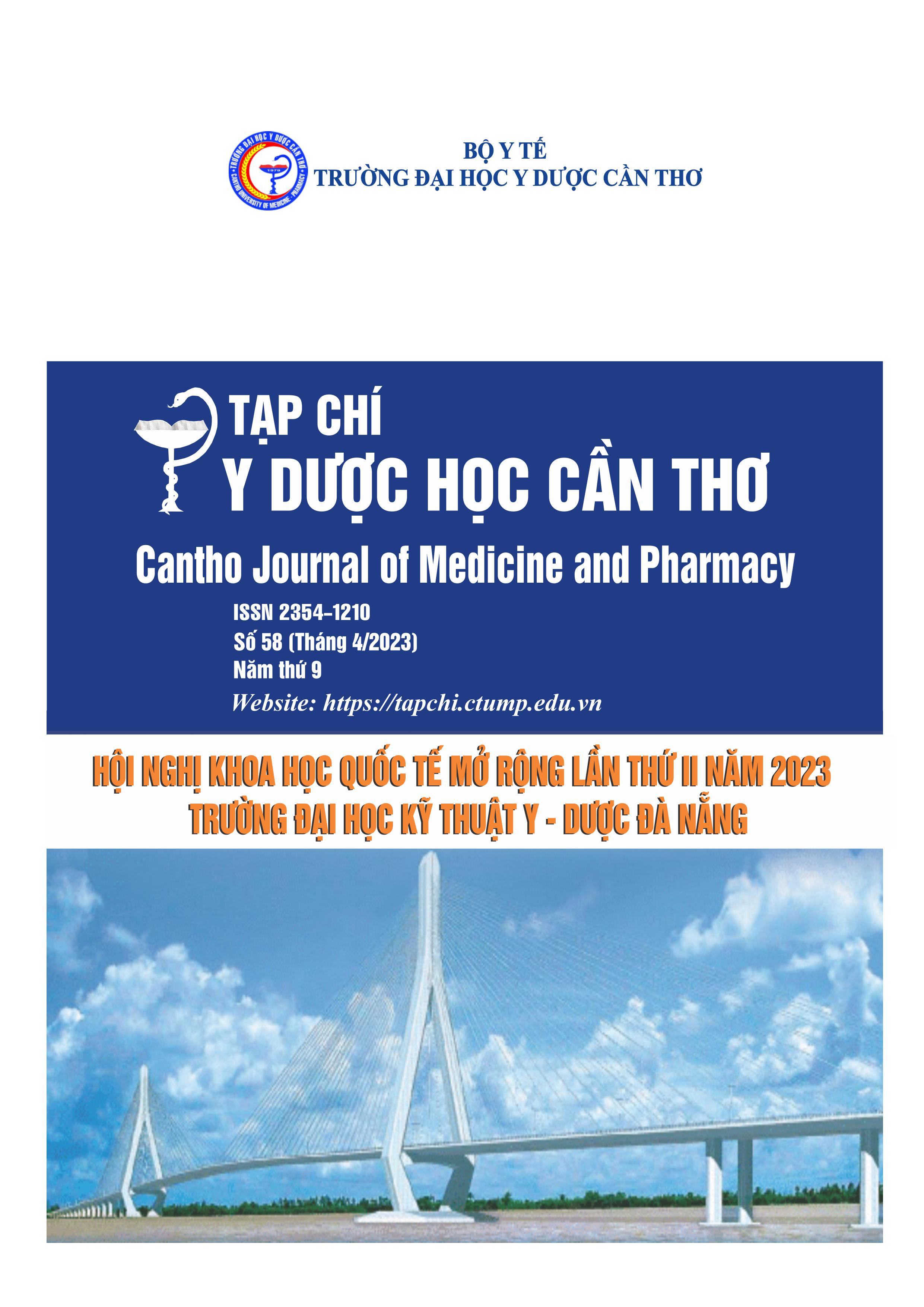STUDY ON THE CLINICAL, LABORATORY FEATURES AND TREATMENT OUTCOME OF EXTERNAL OTOMYCOSIS
Main Article Content
Abstract
Background: Otitis externa is an inflammation of the outer ear canal, with or without infection, and can occur at any age, in which fungal otitis externa is a relatively common disease, especially water. We have a hot and humid climate like ours. Objective: To survey the clinical features, laboratory findings, and treatment outcomes of external otomycosis. Materials and method: Observational, descriptive, and longitudinal study with clinical intervention. Research location: Ear, Nose, and Throat Department of C Hospital in Da Nang. Patients: 42 patients with external otomycosis from September 2017 to September 2019. Results: The disease was most common in individuals over 60 years of age, accounting for 61.9%. There was no significant difference in the incidence of the disease between genders. The two main symptoms of the disease was itchy ears and tinnitus. From the results of direct examination of ear discharge, the highest percentage was attributed to filamentous fungi (73%). From the results of the culture, the most common fungus was Aspergillus (88.2%). Only 15 cases (29.5%) grew bacteria, most commonly Staphylococcus aureus (11.8%) and methicillin-resistant Staphylococcus aureus (11.8%). The treatment response rate was 90.2% and the failure rate was 9.8%. The average duration of antifungal therapy was 11.4 ± 2.4 days. Conclusions: The in-situ antifungal treatment method for the treatment of external otitis caused by fungi is an effective treatment method and has been proven by many research studies.
Article Details
Keywords
External otomycosis, the treatment of external otomycosis, ear fungus.
References
2. Nguyễn Hữu Khôi (2007), “Bệnh tai ngoài thường gặp”, Bài giảng lâm sàng tai mũi họng, Nhà xuất bản Y học.
3. Nguyễn Cảnh Lộc (2018), “Nghiên cứu đặc điểm lâm sàng, cận lâm sàng và kết quả điều trị viêm ống tai ngoài, Trường Đại học Y Dược Huế.
4. Trần Xuân Mai (1994), “Vi nấm học”, Ký sinh trùng y học, Trung tâm đào tạo và bồi dưỡng cán bộ y tế thành phố Hồ Chí Minh.
5. Võ Văn Minh (2013), “Nghiên cứu đặc điểm lâm sàng, cận lâm sàng và kết quả điều trị bệnh viêm tai do nấm tại khoa tai mũi họng bệnh viện 103”, Tạp chí Y dược học quân sự, 8, tr.131-133.
6. Nguyễn Sanh (2001), “Khảo sát tình hình nhiễm vi nấm tai trên bệnh nhân đã phẫu thuật tai, Luận văn thạc sĩ y học chuyên ngành Tai Mũi Họng, Đại học Y Dược thành phố Hồ Chí Minh.
7. Nhan Trừng Sơn (2004), “Nấm tai”, Tai Mũi Họng nhập môn, Nhà xuất bản Y học.
8. Võ Tấn (1974), “Bệnh tai ngoài”, Tai Mũi Họng thực hành, Thành phố Hồ Chí Minh, Nhà xuất bản Y học.
9. Lê Thị Tuyết, Trần Quốc Kham (2007), “Tình hình nhiễm nấm ở những bệnh nhân bị viêm ống tai ngoài đến xét nghiệm tại phòng ký sinh trùng bệnh viện Đại học Y Thái Bình”, Tạp chí phòng chống bệnh sốt rét và các bệnh ký sinh trùng, 1, tr. 88-92.
10. Lê Chí Thông (2010), Nghiên cứu đặc điểm lâm sàng, cận lâm sàng và kết quả điều trị bệnh nấm tai tại Huế, Luận văn tốt nghiệp bác sĩ nội trú chuyên ngành Tai Mũi Họng, Trường Đại học Y Dược Huế.
11. Ismail M.T., Al-Kafri A., Ismail M. (2017), “Otomycosis in Damascus, Syria: Etiology and clinical features”, Curr Med Mycol, 3(3), pp. 27-30.
12. Kaur R et al. (2000), “Otomycosis: a clinicomycologic study”, Ear Nose Throat Journal, 79(8), pp. 606-609.


